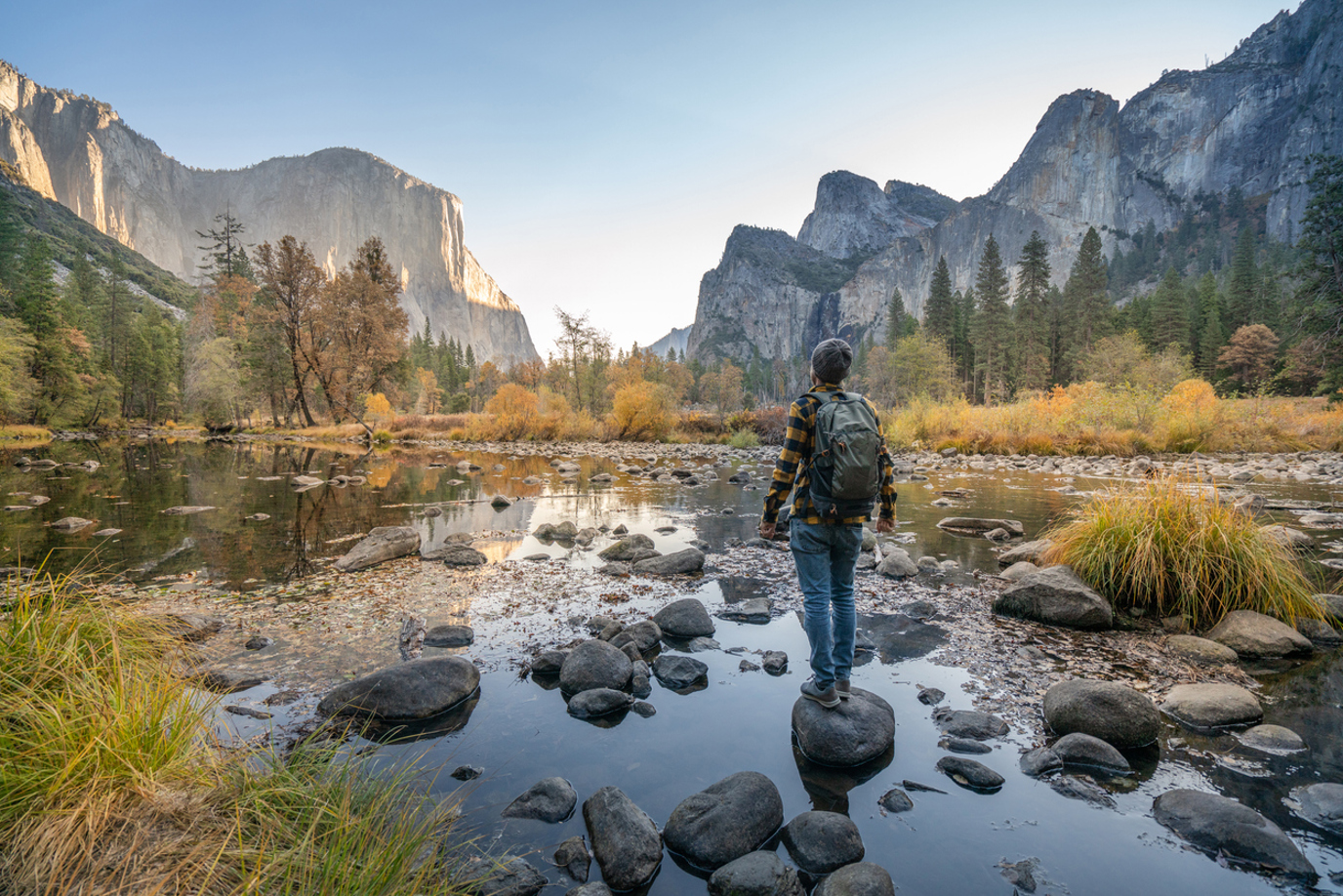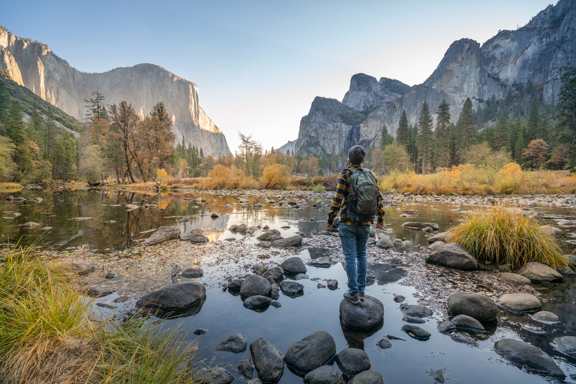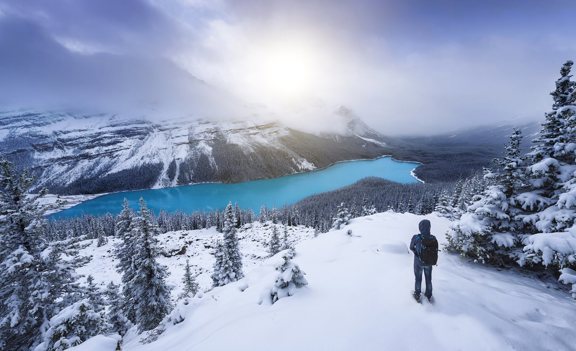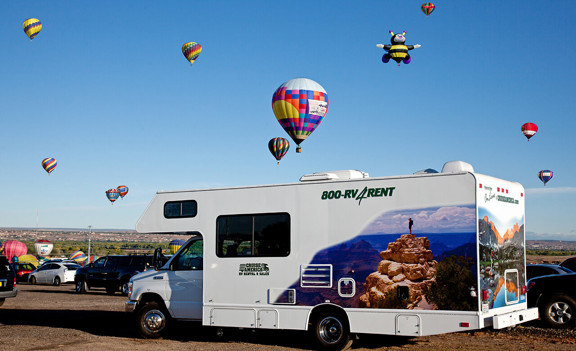

Hiking is one of the most rewarding ways to experience the great outdoors, offering both physical exercise and a chance to connect with nature. Whether you’re a beginner hiker or someone who has started hiking years ago, having the right hiking equipment list is crucial to ensure a safe and enjoyable experience. From day hikes on local trails to more challenging backpacking trips, knowing what gear to bring can make all the difference.
For RV travelers, hiking can become an integral part of exploring new destinations. Storing your hiking gear in your RV allows you to easily access it while visiting national parks, trail systems, and other scenic areas. Planning ahead with day hiking essentials ensures that you’re prepared for weather conditions, trail challenges, and unexpected situations that might arise.
In this guide, we’ll break down all the essentials for a successful hike—from hiking boots and hiking backpacks to hydration packs, first aid kits, and extra layers—so you can hit the trail with confidence. Whether it’s a short hike or a long adventure, having the right equipment ensures happy hiking and a more enjoyable experience on every trail.
Core Hiking Gear (Hiking Equipment List)

Having the right hiking gear is essential for both comfort and safety on the trail. This section covers the core items every hiker should consider, whether you’re planning a day hike or a longer trek.
1. Hiking Backpack
A durable hiking backpack is key for carrying all your essentials. Look for a backpack with a hip belt and adjustable shoulder straps for proper support. For longer hikes, a pack with a water reservoir or room for a hydration pack can help you stay hydrated without stopping frequently.
2. Hiking Boots or Hiking Shoes
Selecting the right hiking boots or hiking shoes is critical. For rough terrain or backpacking trips, boots with solid ankle support help prevent injuries. For short hikes or well-maintained trails, trail runners or lightweight hiking shoes can provide comfort and flexibility. Breaking in your first pair of boots before your hike can prevent blisters and discomfort.
3. Water Bottle or Hydration Pack
Staying hydrated is essential. A reliable water bottle or hydration pack ensures you have access to water on every trail. For longer day hikes or backpacking trips, consider carrying extra water to account for trail conditions and weather conditions.
4. First Aid Kit and Emergency Supplies
A well-stocked first aid kit or aid kit is non-negotiable. Include first aid supplies such as bandages, antiseptic wipes, blister treatment, and any personal medications. For backcountry adventures, consider emergency shelter items and emergency supplies like a fire starter or whistle.
5. Navigation Tools
Even for familiar trails, having a map, compass, or GPS device is essential. Knowing your trail and route can help prevent getting lost, especially in areas with limited cell service.
6. Multi-tool or Knife
A multi-tool can assist with gear repairs, food prep, or other minor tasks while hiking. Keeping it handy in your backpack ensures you’re prepared for inclement weather or unexpected situations.
Having these core items packed and ready ensures that beginner hikers and experienced adventurers alike can tackle day hikes or backpacking trips with confidence, making each excursion safe, enjoyable, and efficient.
Clothing and Footwear (Hiking Boots & Ankle Support)

Proper hiking clothes and footwear are essential for comfort, safety, and performance on any trail. Choosing the right gear helps you adapt to changing weather conditions, trail conditions, and the physical demands of both day hikes and longer backpacking trips.
1. Hiking Boots and Hiking Shoes
A good pair of hiking boots provides stability and ankle support, which is especially important on uneven or rocky terrain. For short hikes, lightweight hiking shoes or trail runners can be a comfortable alternative. Break in your first pair of boots before hitting the trail to prevent blisters and discomfort.
2. Moisture-Wicking Clothing
Avoid cotton layers and opt for moisture-wicking fabrics that keep you dry and comfortable during strenuous activity. Dress in layers to adjust to inclement weather, including a base layer, insulating mid-layer, and a waterproof outer layer.
3. Extra Layers and Rain Gear
Always pack extra layers for changing temperatures, especially in the mountains or during shoulder season. A lightweight rain gear jacket can protect you during unexpected showers, while additional clothing ensures warmth on longer hikes.
4. Sun Protection
Sun protection is critical, even on cloudy days. Wear a sun hat, sunglasses with UV protection, and apply sunscreen to prevent sun exposure. These precautions are especially important on high-altitude trails or in open areas.
5. Accessories for Safety and Comfort
-
Gloves for cold conditions
-
Socks designed for hiking to prevent blisters
-
Gaiters to protect against mud, snow, or debris
-
Lightweight hats for sun and wind protection
By selecting the right hiking boots, hiking shoes, and hiking clothes, you’ll be prepared to tackle day hikes and extended backpacking trips comfortably, safely, and efficiently. This clothing foundation, paired with proper gear, ensures that every trail experience is a good one.
Food and Hydration (Day Hike Essentials)

Proper hydration and nutrition are critical for a successful hike. Having the right supplies ensures energy, focus, and safety, whether you’re on a day hike or a backpacking trip.
1. Water Bottle and Hydration Pack
Always carry more water than you think you'll need. The prevention heat-related issues such as heat exhaustion are key. Additionally, water can be used to help clean out cuts or scrapes occured during the hike. Therefore, bringing enough useable water is the number one priority.
2. Snacks and Energy Foods
Pack lightweight, high-energy snacks to keep your stamina up. Options include:
-
Trail mix for protein and healthy fats
-
Energy bars for quick fuel
-
Fresh fruit or dried fruit
-
Nuts or seeds
These day hiking essentials provide the calories and nutrients needed for endurance and can be easily stored in your hiking backpack.
3. Packing Tips for RV Travelers
If you’re storing your gear in an RV, use a small pack or ziplock bags for snacks and water to keep things organized. Keeping a few key items handy makes it easier to grab essentials before heading out to the trail.
4. Safety and Convenience
Always carry your snacks and water in containers that are easy to access without removing your pack entirely. This ensures you stay fueled and hydrated throughout the hike without losing momentum.
Proper hydration and nutrition are key components of any hiking equipment list, helping you stay energized and safe while exploring hiking trails, whether near your RV campsite or in national parks. By planning ahead, even beginner hikers can enjoy their day hikes without fatigue or unnecessary stops.
Safety and Emergency Items (Emergency Shelter & Aid Kit)

Safety is a top priority on any hike, and carrying the right emergency supplies can make a huge difference. From minor injuries to unexpected weather, having a well-prepared first aid kit and emergency shelter ensures you’re ready for any situation.
1. First Aid Kit and Aid Kit Essentials
A properly stocked first aid kit is essential for all hikers. Include:
-
First aid supplies: bandages, antiseptic wipes, blister treatment, and medical tape
-
Aid kit items for common hiking injuries like cuts, scrapes, or sprains
-
Personal medications and any specialized supplies for snake bite or heat exhaustion
-
Optional: bear spray if hiking in wildlife-prone areas
2. Emergency Shelter
Unexpected weather or trail delays can happen even on a day hike. Carry a lightweight emergency shelter such as a bivy sack, compact tarp, or reflective emergency blanket. This can protect you from rain, wind, or cold weather conditions and provide peace of mind on remote trails.
3. Navigation and Communication
-
Map and compass or GPS device
-
Cell phone (if coverage allows) for emergency communication
-
Whistle or signaling device for low-visibility or rescue situations
4. Fire Starter and Multi-Tool
-
Fire starter or waterproof matches for emergency use
-
Multi-tool to assist with minor repairs or first aid needs
5. Leave No Trace Practices
Always carry a trash bag and pack out what you bring to minimize impact on the natural world. Responsible hikers respect trails, campsites, and wild animals, supporting sustainable practices on the trail.
By including these items in your hiking backpack, you’re prepared to handle unexpected challenges while keeping your day hikes safe and enjoyable. Even for beginner hikers, a well-stocked first aid kit and emergency shelter are non-negotiable for responsible hiking.
Optional / Enhancements for Comfort

While not strictly necessary, adding a few optional hiking gear items can enhance comfort, convenience, and overall enjoyment on your hikes. These items are especially useful for longer excursions or backpacking trips.
1. Trekking Poles / Hiking Poles
Using trekking poles or hiking poles can reduce strain on your knees and improve stability on uneven terrain. They are particularly useful on steep ascents, rocky trails, or for carrying heavy packs during longer hikes.
2. Portable Seating and Lightweight Gear
-
Small foldable chairs or sit pads for rest breaks
-
Lightweight cooking gear for backcountry meals
-
Compact sleeping bags or blankets for overnight trips
3. Binoculars or Wildlife Guides
Enhance your experience by observing wild animals or identifying plant species and birds along the trail. These tools are perfect for nature lovers looking to deepen their connection with the natural world.
4. Camera or Action Cam
Capture memories of your hiking trails, landscapes, and adventures. A small camera or action cam, like a GoPro, is ideal for documenting day hikes or more extensive journeys.
5. Extra Comfort Items
-
Extra clothes for inclement weather or changing trail conditions
-
Duct tape for minor repairs on gear or boots
-
Sun hats and sunglasses for additional sun protection
Including a few of these enhancements doesn’t just improve comfort—it also ensures that your hike is safer, more enjoyable, and tailored to your personal needs. While all the essentials should always be prioritized, these optional items make your next adventure more flexible and comfortable.
Hiking Gear for RV Travelers

For those exploring hiking trails while traveling by RV, planning and organizing your hiking gear is key to convenience and accessibility. With limited space, RV travelers need smart strategies to store, pack, and access their essentials for day hikes or backpacking trips.
1. Efficient Gear Storage
-
Use compartments and storage bins to keep your hiking backpack, hiking boots, and extra layers organized.
-
Store hydration packs, water bottles, and trail mix in easy-to-reach areas for quick access before hitting the trail.
-
Consider a small pack for shorter day hikes, so you don’t have to unpack the full gear every time.
2. Packing Tips for Multiple Hikes
-
Pre-pack day hiking essentials in a dedicated bag to minimize preparation time.
-
Keep emergency supplies, first aid kits, and aid kit items in a designated space within the RV for easy retrieval.
-
Plan for weather conditions by storing rain gear, extra clothes, and sun protection in your gear kit.
3. Choosing RV-Friendly Campgrounds
-
Select campgrounds with access to nearby hiking trails, so you can step right from your RV onto scenic routes.
-
Look for locations with amenities like water refill stations, waste disposal, and parking for day hike prep.
-
Prioritize campgrounds that support sustainable practices to reduce your carbon footprint and enjoy eco-conscious adventures.
4. Safety and Convenience
When hiking from your RV, thoughtful preparation can make your trips smoother and more enjoyable. Check your planned route ahead of time to understand trail conditions, potential hazards, and areas with limited cell service. This ensures you’re ready for unexpected situations without feeling unprepared.
Keep essential items like bear spray, a multi-tool, and compact emergency shelter gear within easy reach. Additionally, consider packing small convenience items such as a ziplock bag for snacks, duct tape for minor repairs, and a compact seating pad for rest breaks. These little preparations can save time and prevent stress on both day hikes and longer backpacking trips.
With careful planning and strategic gear organization, RV travelers can make the most of each adventure—exploring scenic trails and national parks while keeping safety and comfort a top priority.
Book Your Next Hiking Adventure!
Ready to combine RV travel with your next hike? Renting an RV from Cruise America gives you the freedom to access national parks, scenic trails, and backcountry routes while keeping all your hiking gear organized and ready. Plan your next adventure today and experience the convenience and flexibility of RV-based hiking trips. Enjoy the trails!





